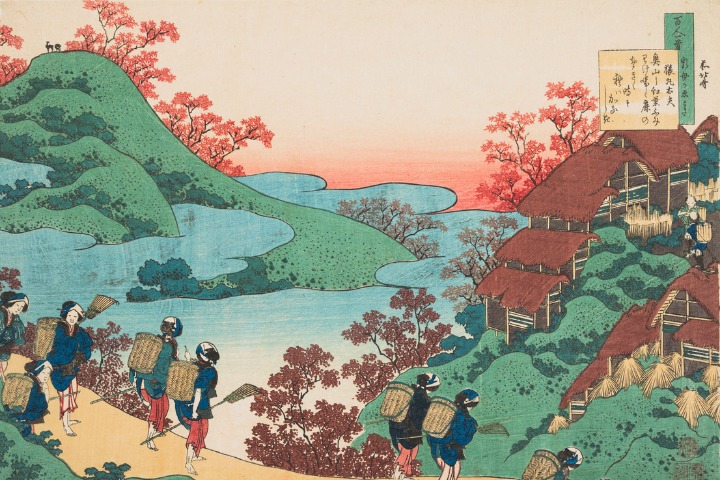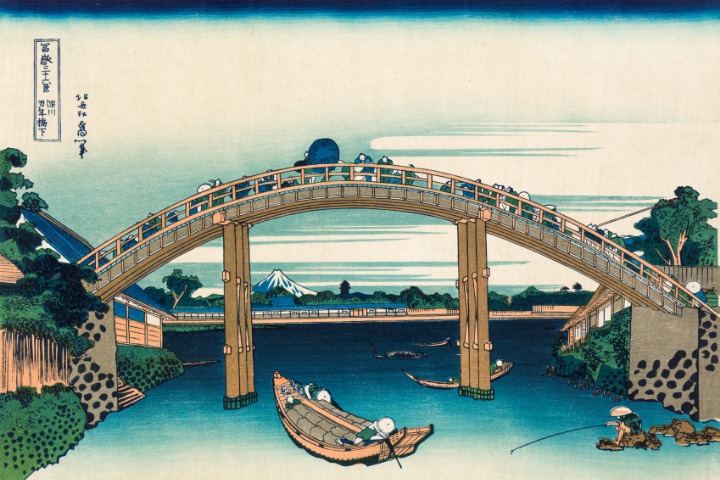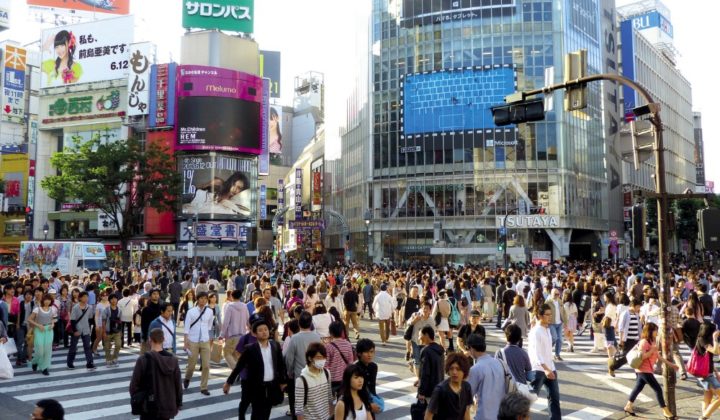Like many, you may have come across the painting above by Japanese artist Hokusai as a result of its immense prevalence all around the world. From posters to tote bags to website banners to restaurant art, Hokusai’s The Great Wave is as widespread as they come. His story begins during the time of the Tokugawa Shogunate in the 17th century and continues up to today.
Let’s delve into this maestro of an artist and find out how, like the Great Wave, Katsushika Hokusai made waves around the art world with his distinguished art style and signature admiration and wonder for Mount Fuji.
Hokusai’s Work, “The Great Wave” or “Under the Wave Off Kanagawa”
If you don’t know much about Hokusai, it is best to start with his most famous painting. As one of the most wondrous art pieces in the world, and perhaps even the best to come out of Japan, the Great Wave has had an immense influence on the world of art.
Created under the series titled “Thirty-Six Views of Mount Fuji” between 1830 and 1833, the Great Wave is said to have inspired the likes of Debussy’s La Mer and Rilke’s Der Berg. At first glance, you may not even notice Mount Fuji in the distance, and that has to do with Hokusai’s keen interest in contrasting objects near and far. His clever perspective play puts the glorious mountain in the background and instead allows the mounting wave to dominate the scene, such that it looks like the wave will consume the mountain and everything in its vicinity with all its unbridled rage.
Hokusai’s Art Style: Going Global From Local

Photo credits: Canva
In his early career, Hokusai mastered fine art painting and mostly explored Ukiyo (浮世) woodblock prints. This is a unique art style in Japan that uses woodblocks to print pictures with a variety of colours. Through Ukiyo, he specialized in portraits, landscapes and book illustrations, and his work became well-renowned all across Japan. Even though Ukiyo was not valued very highly in Japanese culture at the time, Hokusai’s observational skills and keen attention to detail allowed him to create art that could depict landscapes and the everyday realities of the common man with immense life and vitality, which in turn allowing him to carve out a distinct space for himself in the Ukiyo world.
As one of the most industrious landscape artists from Japan, his work quickly spread to parts of Europe, especially since there was a rising fascination with Japan during that time. He exerted significant influence on French impressionist and post-impressionist schools of painting, especially on the works of Monet, Renoir, and Van Gogh with his unique composition of Western and Japanese methods.
His art resonated with millions at the time due to his undebatable ability to capture the human condition in all its strength, comedy and strangeness. His work perseveres today not just through his own paintings but also through his influence on European artists.
Hokusai’s Dutch Influences
Japan cut itself off from the rest of the world at the start of the 17th century, around 1639, and any interaction with Western civilization was outlawed. Since all of Hokusai’s work was created during this isolation, otherwise known as the sakoku period, you may be wondering how he was able to incorporate Dutch influences and European colours, such as the beautiful Prussian Blue, into his paintings. In reality, Japan was still trading with the Dutch (albeit within strict limits) even during its isolation period, and many of Hokusai’s works were stimulated by Dutch art.

Photo credits: Canva
Fortunately, his masterpieces, including the Great Wave, are now recognized and adored at art shows all over the world. The famous Metropolitan Museum of Art in New York, the British Museum in London, and many other museums outside of Japan all have copies of the print on display.
Hokusai Museums to Marvel at in Japan
Hokusai Museum, Obuse, Nagano City
Just thirty minutes outside of Nagano City, you’ll find the Hokusai Museum in a small town called Obuse. Opened in 1976, this museum is one of the oldest dedicated to Hokusai, celebrating his festival float ceiling paintings titled Dragon and Phoenix. Here, you can also find many of Hokusai’s revered ukiyo pieces.
Sumida Hokusai Museum, Tokyo
Dedicated entirely to Hokusai, this museum in the Sumida ward of Tokyo beautifully curates his works to portray the evolution of his journey as an artist. Showcasing some of his more famous paintings such as the Great Wave alongside some of his lesser-known works allows visitors to reach a deeper understanding of the artist and his development over the course of his career.
Ota Memorial Museum of Art, Tokyo
If you want to make a day out of exploring the intricacies of ukiyo, this museum will suit your interests perfectly. Located in central Harajuku in a cosy space, the Ota Memorial Museum showcases different parts of its impressive ukiyo collection, alternating the collection every other day. You’ll be sure to find some wonderful pieces from Hokusai in their showings.

Photo credits: Canva
How Hokusai Changed the World
While Hokusai was influenced by the trading of art and colours from the Western world, his own work paved the way for Japanese art in the Western world, changing the way that the West looked at Japanese art for good.
Related Articles
- Five Must-Visit Art Museums Around Japan
- 3 Moments in Japanese History You Should Know About
- Usa City, Oita Prefecture – a Cultural Marvel to Put on Your Bucket List
- The Best Tokyo Galleries for Photography Enthusiasts
Featured image credits: Canva






